
"Unfortunately it's leukemia..."
I spent 2 years working at Dana Farber Cancer Institute as a New Patient Coordinator (NPC) for the Leukemia and Bone Marrow Transplant team, and this was the dreadful sentence that led to each new patient conversation. In such an emotional moment, all I could do was be an empathetic voice on the other line ready to help in any way possible
"Unfortunately it's leukemia..."
I spent 2 years working at Dana Farber Cancer Institute as a New Patient Coordinator (NPC) for the Leukemia and Bone Marrow Transplant team, and this was the dreadful sentence that led to each new patient conversation. In such an emotional moment, all I could do was be an empathetic voice on the other line ready to help in any way possible
NEW PATIENT PROCESS

What is the New Patient Call?
The call is the first point of contact between the patient and the New Patient Coordinator(NPC). NPCs set the tone and let the patient know that we are here to handle everything needed for their visit. We want the process to be as simple as possible for the patient: They have to call, make the appointment and show up for it.
We work behind the scenes to prepare all the necessary paperwork and obtain medical information before the patient arrives. Providing excellent customer service is of the utmost importance here. It is a vital part of the NPCs’ job to make the patient feel that from the moment they get us on the line we are handling their needs.
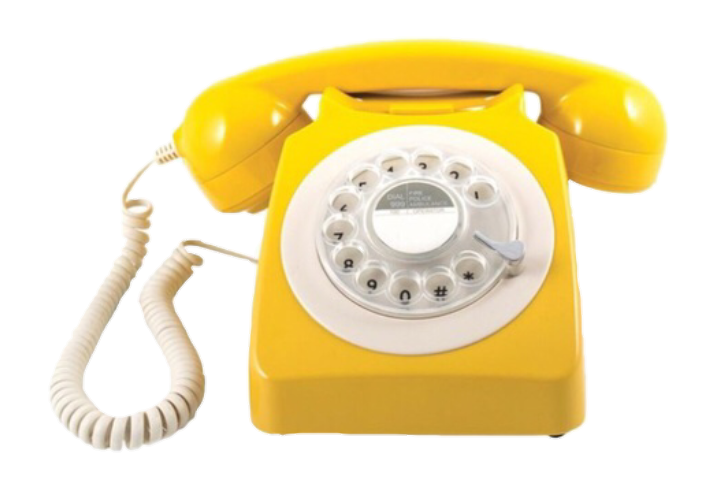





LET'S TALK INTERVIEWS
To get a better sense of who the patients were and what they needed, I conducted user interviews with patients, fellow NPC’s, doctors, and nurses
What Patients Say...
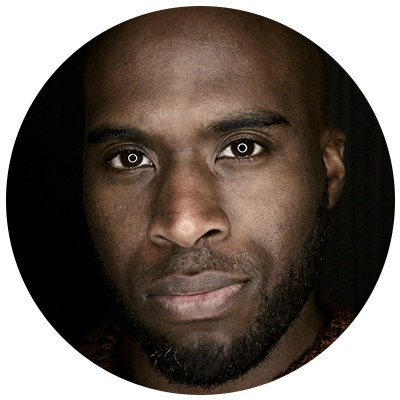


What NPCs Say...
I was in a fortunate position where I was able to speak to NPC’s who previously and currently held the same role as myself. NPCs mainly worried about getting the correct information from patients. Patient information is pivotal in creating a chart (a file with all previously seen doctors, diagnosis, and test done) for the patient’s first visit. If the correct info is not present then the first visit isn’t as useful and informative as it can be.

What medical professionals say...
I spent time speaking to various doctors and nurses on what type of information they needed most for this visit: Pathology slides, medical records, doctors they have seen, and previous tests.
From the insight gathered, I was able to construct 7 main questions that must be answered during the new patient call to ensure essential information is correctly obtained.
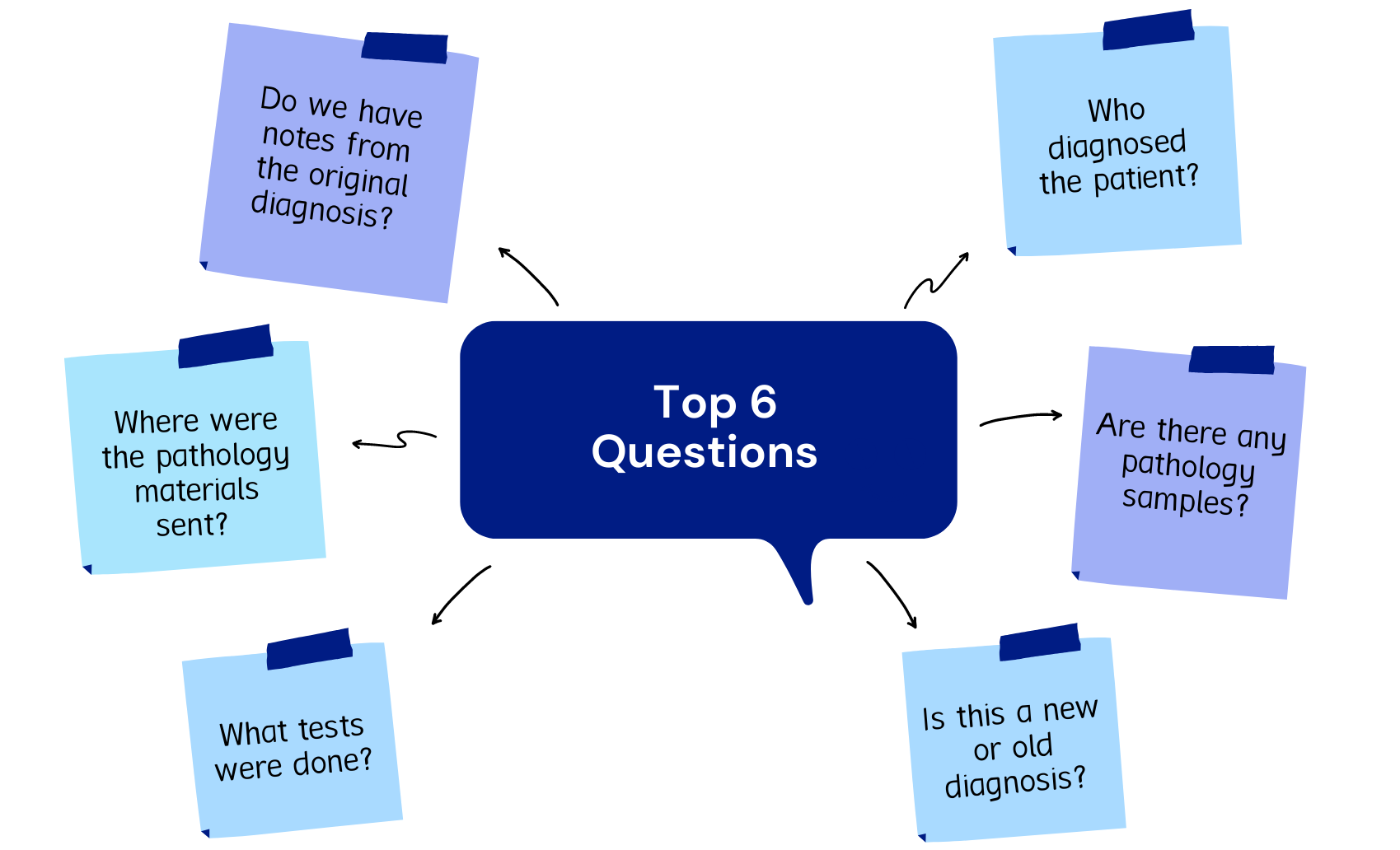
Overarching Themes From Our Users

1
The patient is under a lot of emotional stress during the call and tends to give incomplete info which leads the NPC spending additional time to track down the correct info
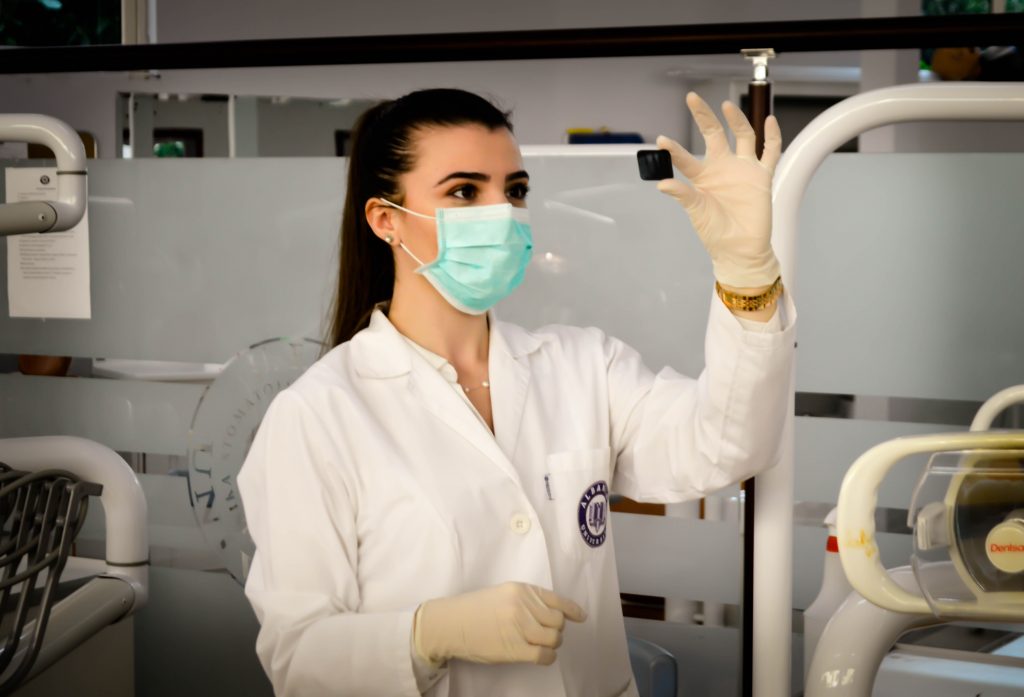
2
NPCs need to make sure they are asking the correct questions to ensure they are getting all the necessary info for patient records retrieval

3
Doctors need NPCs to gather medical records from previously completed consolations and labs; they don’t want to waste time
PERSONA CREATION
Overall the user interviews and affinity mapping exercise led me to create a persona. Instead of creating one overall persona, I believed a persona group reflected the truth of our patient pool.
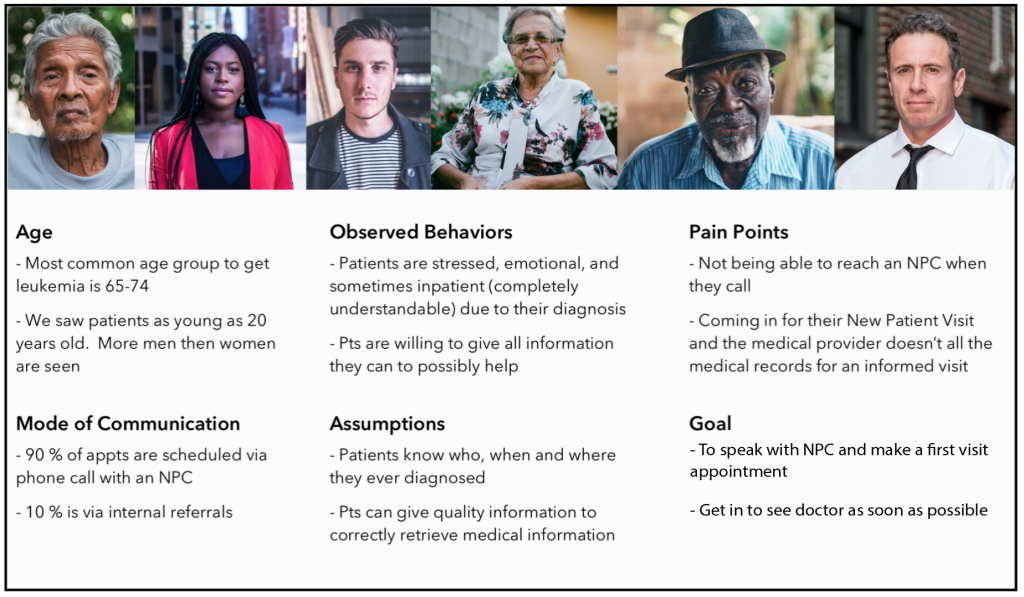
After I created this persona and reanalyzing all of my data, I realized that my primary persona was actually the NPC and not the patient. The NPC was the connecting point for all the other users and the way they were collecting the data from the new patient call was important to the rest of their workflow.

Following this realization, I took a deeper look at the current form that NPCs use to gather information on the New Patient Call.
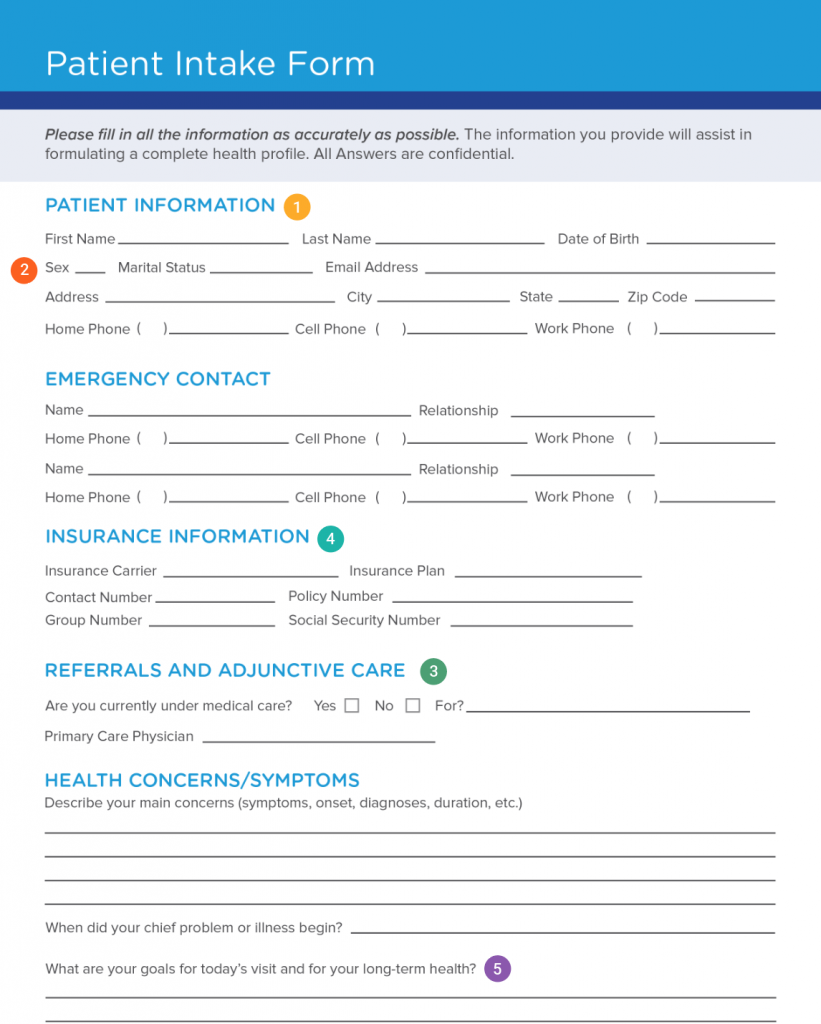
HEURISTIC EVALUATION
I completed a heuristic evaluation on the current form used and found that there was definitely room for improvement. I also spend 3 weeks watching the NPCs use the form and noted their frustrations.

- Patient’s aren’t the only ones calling…family members, doctors, and nurses also call
- Wasn’t modern in terms of gender identities
- No place to distinguish between the primary and referring MD
- NPCs needed time to open their calendars so they usually asked about insurance as their calendars loaded
- No space for checking your work
PROBLEM & SOLUTION
PROBLEM STATEMENT
Branden, the NPC, needs an efficient way to improve the quality of information he receives from patients during the new patient call because callers (patients and family members) tend to give incorrect information due to the amount of emotional stress they are under.
SOLUTION STATEMENT
By redesigning the NPC New Patient call form to have fewer steps, clearer language, and a more intuitive flow, we will make sure that Braden gets the correct information he needs.
We will know this to be true when we see a reduction in time spent in tracking down and retrieving patient medical records and pathology slide samples for the first visit.
IDEATION
Next, I spent some time drafting ideas for a new form. I thought about things like flow of the conversation, wording used on the form to match natural speech, and most importantly how to make sure all the information needed is gathered.
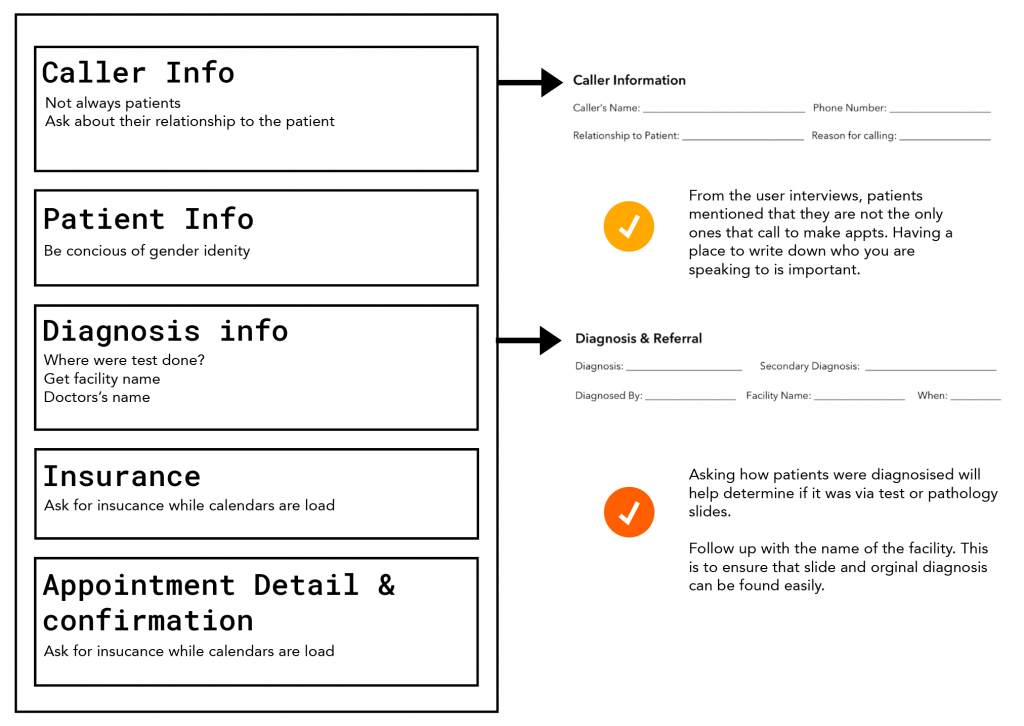
OUTCOME
At the time since I couldn’t change the actual hospital form, I made edits to the form once it was printed. With this new structure, we were able to ask more targeted questions which set a strong foundation for medical record retrieval and appointment scheduling.
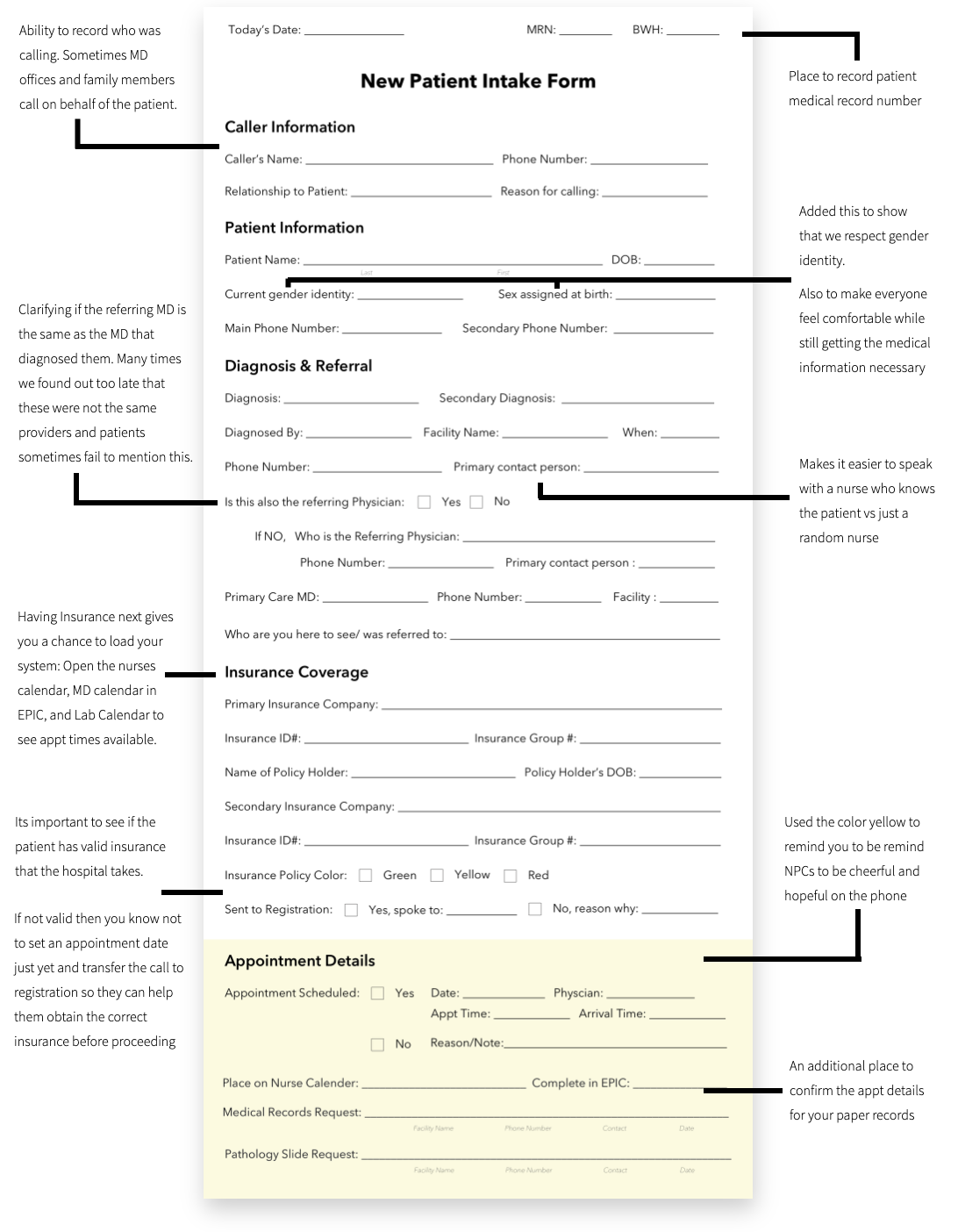
Results
As soon as 5 weeks after implementing this change, collectively we saw the following changes
in time it took to retrieve medical materials
of misdiagnosis & other errors per week
in the number of patients helped per week
REFLECTION
I wasn’t always a UX Designer. The joy of this case study is seeing how I had been doing design thinking without even knowing it. The idea of trying to understand users and challenging assumptions to get to the heart of an issue is something that comes naturally to me. This way of thinking allows me to think of alternative solutions to common problems. By questioning the way things were being done and listening to patients, NPCs, and medical professionals, I developed a deeper understanding of how I could improve the NPC role and patient experience with something as simple as restructuring a form.